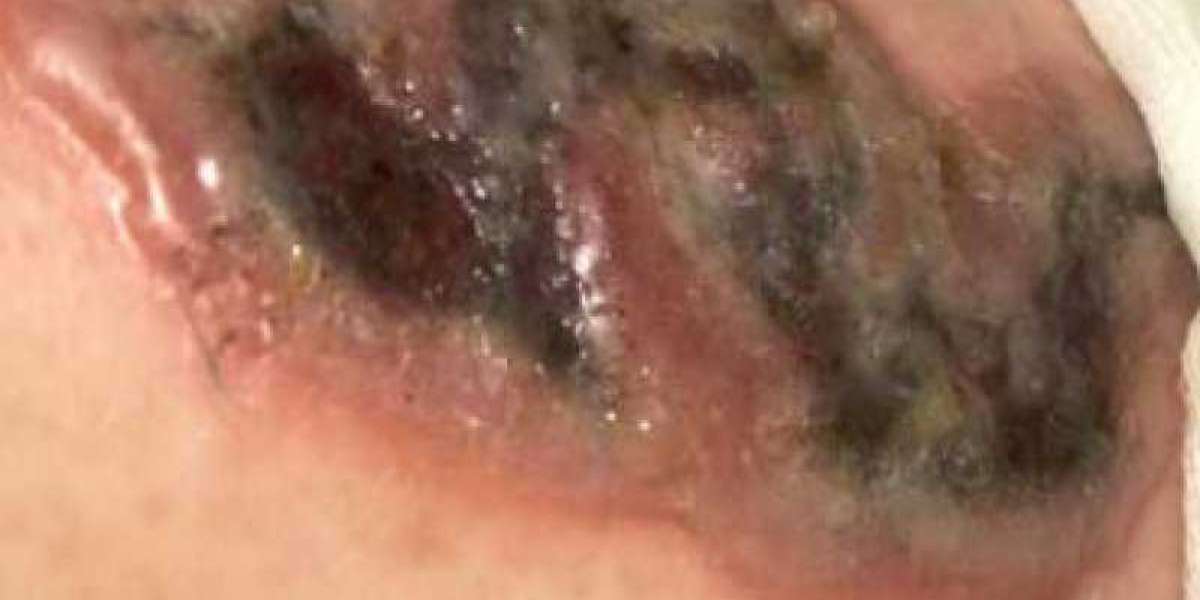Laser tattoo removal is one of the most effective and popular methods for erasing unwanted ink. While it is generally safe when performed correctly, it's not without potential side effects. Understanding the signs of injury after laser tattoo removal is essential to identify complications early and ensure proper healing. In this guide, we’ll explore the typical signs of injury, how to distinguish them from normal reactions, and what you can do to support recovery.
Redness and Swelling:
Redness and swelling are some of the most common reactions Signs of injury after laser tattoo removal (علامات الإصابة بعد إزالة الوشم بالليزر). These symptoms are part of the body’s natural inflammatory response and usually occur within minutes of the treatment. The skin may appear flushed and slightly raised around the treated area, similar to a mild sunburn. In most cases, this reaction subsides within a few hours to a couple of days. However, if the redness intensifies, becomes warm to the touch, or is accompanied by spreading inflammation, it may indicate an infection or other skin injury requiring immediate attention. Monitoring the area closely is crucial during the first 48 hours.
Blistering:
Blister formation is a common yet often alarming sign following laser tattoo removal. Blisters typically develop due to the heat generated by the laser breaking down the ink particles and impacting the upper skin layers. While blisters may look concerning, they are a normal part of the healing process for many individuals and are not always a sign of serious injury.
What matters most is how the blisters are handled. Popping or peeling them can lead to scarring or infection. If blisters become excessively large, painful, or filled with yellow or green fluid, this may be a sign of infection and should be carefully managed to prevent further skin damage.
Scabbing and Crusting:
After laser treatment, scabbing and crusting may form as the skin begins to heal and regenerate. These crusts are made up of dead skin cells and broken-down ink particles. While this is a normal reaction, it’s important to avoid picking at them, as this can cause scarring or reintroduce bacteria to the skin. Injury-related concerns arise when scabbing is excessive, deep, or unusually prolonged. Thick, dark scabs that remain beyond the normal healing timeline (typically around 10–14 days) might signal a skin burn or deeper injury. Keeping the area moisturized and protected from trauma is key to safe healing.
Hypopigmentation and Hyperpigmentation:
Changes in skin pigmentation are also potential signs of skin injury after laser tattoo removal. Hypopigmentation refers to lighter patches of skin, while hyperpigmentation involves darkened areas. These effects are more common in individuals with darker skin tones, but they can occur in anyone. While pigmentation changes can be temporary, lasting a few weeks to several months, some cases may become permanent if the skin is damaged deeply. It is vital to shield the treated area from sun exposure, as UV rays can worsen pigmentation issues during the healing process.
Infection:
Infections are a more serious concern and a definitive sign of injury. If bacteria enter the skin through open blisters or broken scabs, the risk of infection increases. Warning signs include increasing pain, redness that spreads beyond the treated area, pus discharge, foul odor, and fever. Preventing infections involves proper aftercare, including cleaning the area with mild antiseptic solutions, avoiding touching with unclean hands, and wearing loose, breathable clothing to prevent irritation. If an infection is suspected, immediate medical intervention may be required to avoid more severe skin or systemic complications.
Scarring:
Though relatively rare with modern laser technology, scarring can occur if the skin is not properly cared for after treatment or if injuries such as burns, infections, or repeated trauma happen. Scarring may present as raised, thickened tissue (hypertrophic scars or keloids), or as sunken areas (atrophic scars). Scar formation can also result from scratching or picking at the healing skin. Early signs of scarring include unusual firmness, tightness, or discolored patches that don’t fade over time. Gentle skin care, hydration, and patience are vital, and in more serious cases, specialized scar treatments might be necessary.
Delayed Healing and Skin Texture Changes:
Delayed healing and noticeable changes in skin texture can also signal complications. If the treated area remains red, sensitive, or painful beyond the expected healing window (typically 1–2 weeks), this might indicate an underlying issue. Similarly, if the skin becomes rough, thickened, or uneven in texture, this could be a result of injury. Environmental factors such as sun exposure, poor aftercare, or friction from clothing can exacerbate these effects. To promote recovery, it’s important to follow a structured aftercare routine that includes keeping the skin clean, moisturized, and protected from harsh elements.
Final Thoughts:
Laser tattoo removal is generally safe, but being aware of potential injuries helps you navigate the healing process more confidently. While some side effects like redness, swelling, and mild blistering are normal, signs like severe infection, prolonged scabbing, pigmentation changes, and scarring should be monitored closely. Recognizing these symptoms early and maintaining a proactive aftercare routine can make a significant difference in your skin’s long-term health and appearance.




